The Battle For Britain
By Richard Vincente
Victoria’s Secret Faces An Uphill Battle In The UK Lingerie Market
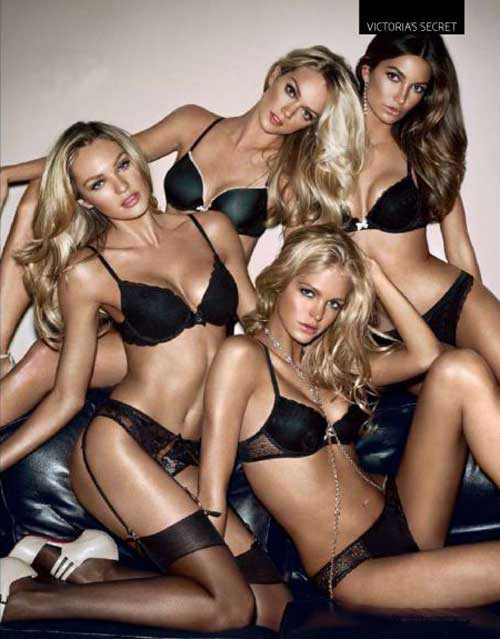
The queue should start forming any day now. Clusters of excited teens and twenty-somethings, all girls, will line up along New Bond Street and around the corner onto Brook. Police will be called in to direct traffic and private security crews will manage the crowds trying to get inside. Reporters and bloggers and TV cameras will be everywhere.
Say what you want about Victoria’s Secret, they sure know how to turn underwear shopping into an event.
Anticipation over the opening of the American chain’s London flagship store — its first full-product store outside of North America* — has been building for months, only to be deflated in July when the company announced that its long-planned, pre-Olympics launch was delayed indefinitely.
The buzz-killing postponement of the flagship store sparked plenty of speculation, but it shouldn’t have been a big surprise to anyone who knows the company. Despite its flashy brand image, Victoria’s Secret is a famously slow-moving company that executes its strategic plans cautiously, like they’re plotting moves in a chess game. Limited Brands, the American retail giant that owns VS, has been planning its UK expansion for a long time (the London store was first announced more than two years ago) and, as the saying goes, they have only one chance to make a good first impression.
At this point, only one thing is certain about Victoria’s Secret’s British invasion: whenever it happens, it will be a game-changer, both for the UK lingerie market and for Victoria’s Secret too.
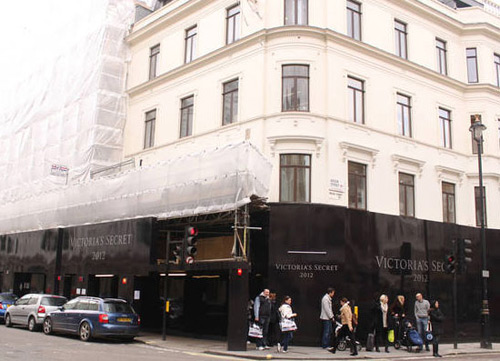
The London opening isn’t a one-off for Victoria’s Secret, which first began to look beyond its American base a few years ago with franchise mini-boutiques in a handful of international airports and tourist destinations. Today, the company is committed to an aggressive international expansion and, according to Limited Brands’ latest investor report, is “on track to open over 200 international locations THIS YEAR.”
The opening of the London flagship store will eventually trigger a stealth-like expansion into malls across the UK — a strategy that Victoria’s Secret has used with tremendous success in Canada. In addition, three new high-end stores are slated for the Middle East; 10 stores are targeted for Colombia; one mall store is planned for El Salvador; the Dominican Republic will get two VS shops; and there’s even a franchise beauty and accessories boutique on the books for Poland.
The goal here is obvious: to turn a tremendously successful North American name into an international fashion powerhouse. But how well the Victoria’s Secret zesty, all-American formula of products, price and marketing will play in foreign markets is unknowable.
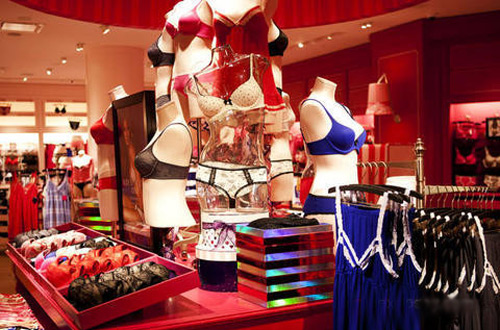
The company’s experience in Canada over the past two years is probably the most instructive barometer for anyone trying to guess what kind of impact Victoria’s Secret will have in the UK.
After exuberant openings in Edmonton and Toronto in 2010 (complete with attention-grabbing appearances by the supermodel Angels), Victoria’s Secret has slowly built up its Canadian roster. It now has nearly two dozen VS and VS Pink stores around the country, and has announced seven new stores in Canada for the coming year. Its latest opening, just last week, drew predictable crowds of shoppers and gawkers to the small maritime metropolis of Halifax.

The Canadian rollout was a triumph of execution and a reminder of the powerful global appeal of the Victoria’s Secret brand. Canadian shoppers embraced Victoria’s Secret almost ecstatically, even though you could find equivalents to most of the company’s products in Canadian shops like La Vie En Rose, La Senza, Jacob and other mall brands.
And who was the big loser in the battle for Canadian market share? Ironically, it’s been Limited Brands itself, which also owns the struggling La Senza brand in Canada. La Senza (Canada) has foundered in Victoria’s Secret’s wake, and last year Limited closed 40 of its stores in this country. La Senza jobs were moved from its historic Montreal base to Limited’s headquarters in Ohio, and the company plans to shutter 30 more branches as it tries to “right-size” the brand and convert it into discount teen label.
Meanwhile, the most vulnerable competitor in Canada, La Vie En Rose, responded to the VS invasion cleverly. Rather than just fight Victoria’s Secret on home turf, Canada’s largest independent lingerie chain looked abroad, announcing plans to take its brand into an odd assortment of relatively untapped foreign markets — Georgia, Kazakhstan, Azerbaijan — and expand its existing presence in several Middle East countries as well as China and India. Such moves won’t protect the company’s historic market share in Canada, but it will give La Vie En Rose new sources of cash to strengthen its brand and its bottom line.

In Britain’s feverishly competitive lingerie market, anyone who thinks there won’t be casualties following Victoria’s Secret’s arrival is either in denial or hasn’t been paying attention. Victoria’s Secret generated more than $6.1 billion USD from its North American operations last year — more than the entire $4.5 billion UK lingerie market. If U.S. benchmarks hold up in Britain, it’s reasonable to expect each new Victoria’s Secret location to siphon at least $5-million annually from the market. The big question is, who’s going to pay?
Some observers have suggested that Elle Macpherson Intimates — Britain’s most popular bra label — is the most vulnerable, but the Bendon Group’s flagship brand typically appeals to a slightly older demographic than Victoria’s Secret (a razor-thin distinction that has insulated La Vie En Rose and Jacob from too much erosion in Canada).
More likely, the companies with the most to lose are those with the largest retail operations, who will have to fight for foot traffic, or big e-commerce portals, which stand to lose some click-happy fingers. On the retail front, that means Debenhams and the iconic Marks and Spencer (which claims to sell more than 60% of all knickers bought in Britain); on the e-comm side, it means ASOS and Topshop.
Larger independent retailers are also nervous — and girding for battle. Ann Summers, the UK’s biggest seller of erotic toys, last year expanded its sexy lingerie offerings significantly in an effort to broaden its customer base. Meanwhile, successful newcomer Boux Avenue has pulled out all the stops, announcing its own plans to expand into foreign markets and, earlier this month, repositioning its brand image by hiring a plus-sized model to be the company’s new face.
Others who face a tough fight: push-up bra specialist Ultimo and even Agent Provocateur, the high-priced erotic brand that owns “sexy” in Britain the way Victoria’s Secret does in the U.S.
Still, the obvious low-hanging fruit in the UK lingerie market in 2012 is La Senza. The historic UK retail label (which is unaffiliated with the North American brand of the same name) teetered on the edge of bankruptcy late last year, sending spasms through the industry. In January, though, it was rescued by the formidable Kuwait-based retail giant M.H. Alshaya, which earned tremendous goodwill by keeping 60 stores open and thus preserving hundreds of UK jobs.
Alshaya’s intervention in La Senza, however, sets the table for an unusual market showdown. Not only does La Senza compete directly against VS for the youth push-up bra and lacey knickers market, but parent company Alshaya also operates Victoria’s Secret’s prized franchise stores in the Middle East. Will Limited Brands really try to build UK market share at the expense of its powerful Middle Eastern wholesale partner, thereby cannibalizing itself like it has done in Canada? Don’t bet on it.

One thing you can bet on, though: British lingerie makers and sellers aren’t going to let the pink polyester tide wash over them without a spirited fight.
The UK lingerie industry has been a beehive of activity over the past year as smaller labels expand into new categories and introduce new distribution channels in order to increase their consumer reach. No one will say they’re deliberately bracing to take on Victoria’s Secret, but the signs are everywhere. And they’d be foolish not to.
From a fashion standpoint, Britain is also the most hyper-creative lingerie market in the world right now. Whether your tastes run to fashion-forward concept brands like Nichole De Carle or Made By Niki, eco-labels like Sweetling and Ayten Gasson, edgy artsy names like Dirty Pretty Things and Yes Master, vintage revivalists like What Katie Did and Kiss Me Deadly, or high-end fetish wear from the likes of Bordelle and Lascivious, Britain is awash in talent and overflowing with style options. There is nothing you can find in Victoria’s Secret that can’t be trumped by existing goods in the UK market.
There’s also an ‘X Factor’ in the coming market battle. How much do British women care about where their knickers come from? How solid is their allegiance to homegrown UK labels, some of whom (like Marks and Spencer) have been providing undies to British families for generations?
British lingerie professionals see this as vital to the industry’s survival and have collectively been pushing a “Made In UK” promotional strategy that piggybacks on the patriotic fervor whipped up by the Queen’s Jubilee and the recent Olympics. To some, the arrival of Victoria’s Secret in London is a repudiation of that noble nationalistic goal, and one that can only be thwarted at the cash registers. For UK women who embrace the loyalist message, buying a Victoria’s Secret lace thong would be as treasonous as driving a Toyota in Detroit.
Whether the patriotism message sinks in or not, make no mistake: Victoria’s Secret will ignite a war over brand loyalty in Britain, a battle for the hearts and souls and butts of young consumers.
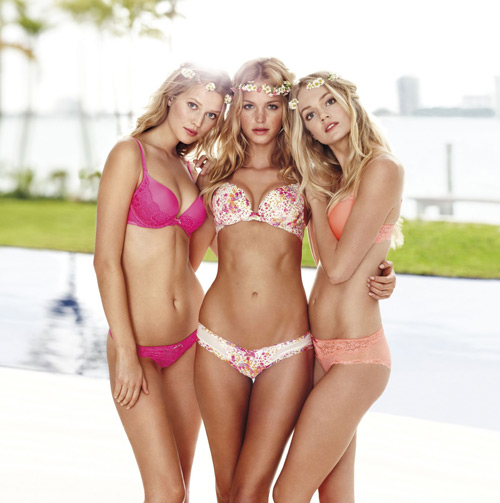
Victoria’s Secret also faces other significant obstacles in finding a home in the UK market, where people still giggle over the American word “panties”:
- There are some dramatic differences in foundations sizing between the UK and North America, a fact that has proved costly for other international brands trying to make the same leap. In addition to different size standards, recent studies have shown that British women’s average bra sizes have grown in recent years. Bustier, curvier figures are much more common in the UK, and much less stigmatized than in North America. How will the Victoria’s Secret squadron of rail-thin supermodels appeal to the same consumer base that has embraced Curvy Kate?
- Victoria’s Secret has sailed through the recession of the past four years with consistent, if unspectacular, growth that has kept shareholders happy and left other fashion retailers writhing with envy. A lot of that success, though, has been the result of perpetually discounting prices and incentivizing customers with coupons and gift giveaways. It’s a great strategy for hard times because it keeps cash flowing and inventory moving, but it eats into profit margins and risks turning the brand into a clearance house — which is not how Victoria’s Secret wants to be perceived. The company will have trouble using price as an incentive in Britain, where retailers have been slashing costs by outsourcing production and passing savings on to customers for years. Cheap knickers are already abundant.
- Market localization plays a stronger role in Britain than other markets. What sells in Surrey or Middlesex can be significantly different than what appeals to shoppers in other parts of the realm. It’s a unique characteristic of the UK consumer that bedevils cookie-cutter mall brands, and one which may force Victoria’s Secret to tweak its proven recipes for success to account for local tastes.
- Cultural differences might also impact the VS product catalog. Perhaps every American college co-ed wants the words “sexy” and “pink” printed on their backsides, but whether UK girls have the same taste for American logo-porn remains to be seen.
- Victoria’s Secret’s marketing juggernaut is pervasive in North America (seriously, when was the last day you didn’t see an image of Miranda, Candice, et. al. somewhere?). But all those provocative window displays and mural-size billboards might draw fire from UK censors, who police such things much more closely than we do in North America. A new child-protection law even governs the proximity of lingerie advertising near schools, which will cut into VS’s marketing blanket.
Finally, the biggest impediment to the company’s conquest of Britain and other markets might be Victoria’s Secret itself. Its remarkable success over the past two decades has transformed lingerie marketing and merchandising, but every page in the VS playbook — including its product inventory — has been copied by its competitors everywhere. Victoria’s Secret may land on Britain’s shores only to find its enemy looks frighteningly familiar.

What Victoria’s Secret has going for it in the coming battle is something called brand penetration — that combination of name recognition and customer approval that can be a retailer’s license to print money. Thanks largely to its Angels and the annual TV runway show, Victoria’s Secret has astonishing brand penetration in countries around the world where it has never traded before. And in the UK there’s an added bonus: the Victoria’s Secret name — a sly dig at the country’s longest-reigning monarch and her straitlaced morals — always made the company sound British to begin with.
Brand power alone should give the company a huge head start and ensure a brisk trade when it finally opens its doors. But what happens after that is something else altogether. Victoria’s Secret will be mindful to avoid anything resembling an anti-American backlash, hoping that the allure of its rosy, fragrant emporiums will make British women put their patriotism aside at least temporarily.
It’s even tweaking its business model to make a good first impression on its new UK audience. Opening its flagship store on Bond Street — where people shop for upmarket fashions and couture labels — is an ambitious strategy designed to elevate the brand’s image. (Watch for something similar in the U.S. this year as the company undertakes a multi-million-dollar makeover that will turn its flagship New York store in Herald Square into a 50,000-square-foot underwear wonderland.)
There are also rumors that Victoria’s Secret will open its London flagship store quietly, without any Angels present to whip up a predictable media frenzy. If that turns out to be true, it’ll be an indication of the company’s careful, wait-and-see approach to the task of exporting its American brand of sexy to the world and, perhaps, a sign of uncharacteristic modesty as it begins that noble crusade.
Just don’t expect that to last for long.
(*NOTE: A much smaller VS mall store did open as scheduled last month, but with little fanfare, near the Olympic athletes village. Victoria’s Secret has not announced a new opening date for the New Bond Street store.)
Richard Vincente covers Victoria’s Secret news and other topics for LingerieTalk.com.
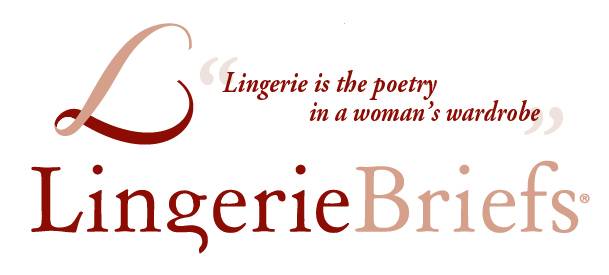

[…] [A version of this article first appeared as a guest column on LingerieBriefs.com.] […]
[…] [A version of this article first appeared as a guest column on LingerieBriefs.com.] […]
Great article